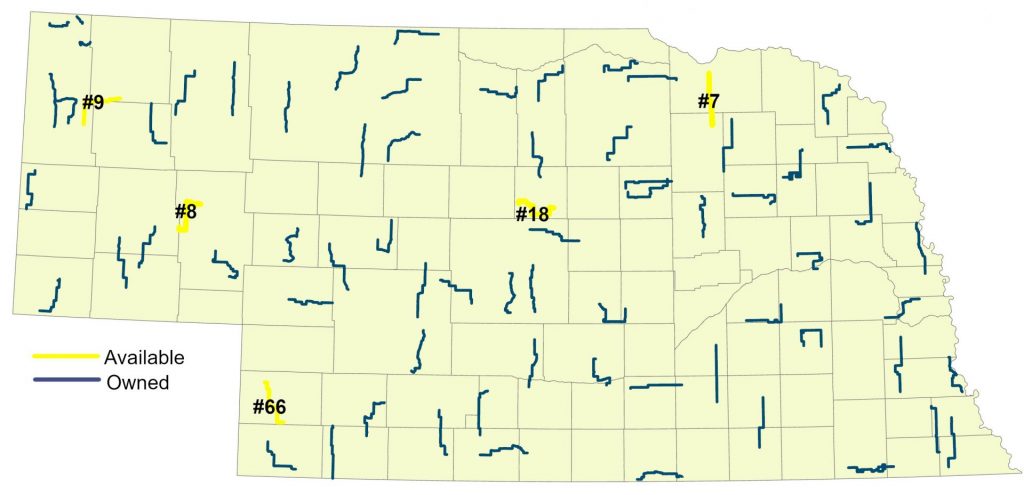The Breeding Bird Survey (BBS) is a long-term, volunteer-driven bird monitoring program conducted throughout North America. BBS data are used widely by wildlife agencies, researchers, birders and conservation planners. The program began in 1966 and more information about the BBS can be found HERE. I am the state BBS coordinator and perhaps my principal duty is to identify and recruit individuals to fill vacant routes. Running a BBS requires only one morning in June to complete. Conducting a BBS route provides the opportunity to experience a back corner of Nebraska that you otherwise may not visit. Furthermore, it is a great way to contribute to a larger effort that helps everyone understand how bird populations and distributions are changing over time. Currently, there are several routes available in Nebraska, especially in the central portion of the state. Open routes are shown in yellow and are numbered on the map below.
If you’re interested, you have the opportunity to contribute to this program by adopting one of these routes. However, it is also important to ponder the following sideboards when considering taking on a BBS route.
- Observers need access to suitable transportation.
- Observers should possess good hearing and eyesight.
- Observers need to be able to identify all breeding birds in the route’s area by sight and sound. Knowledge of bird songs is extremely important because most birds detected on these surveys are singing males.
- New BBS participants must also successfully complete the BBS Methodology Training Program before their data will be used in BBS analyses.
- Observers should have the intention of running a BBS route for more than one year.
Please contact me (joel.jorgensen@nebraska.gov or 402.471.5440) if you have questions or if you feel qualified and are interested in one of the available routes.
Good birding!
